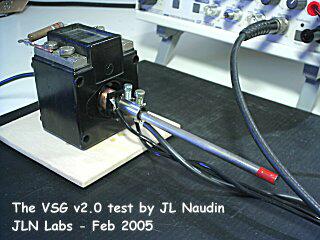
VSG
v2.1 - February 9, 2005 -Tests report
created on February 9, 2005 - JLN
Labs - Last update February 10, 2005
Toutes les
informations et schémas sont publiés gratuitement ( freeware )
et sont destinés à un usage personnel et non commercial
All informations and
diagrams are published freely (freeware) and are intended for a private use and a non commercial
use.
After a lot of test
runs, I have encountered the first problem with the VSG, the
carbon rod has melted the plastic tube of the coil and the sparks
have vaporized some carbon powder on the tip of the tungsten rod,
this has damaged the contact area between the carbon rod and the
Th-load tungsten rod ( see the Feb 8, 2005 tests report ). So, after that I have cleaned the
tungsten cathod and placed a new carbon rod, the VSG is now ready
for new tests runs.
The purpose of these
new tests is :
to use the
full energy of the capacitor so as to get a max useable
energy at its output. In the previous experiment, I have
used only a very short discharge pulse (166 µs). Now, in
this case the function generator has been set so as to
get a full discharge of the capacitor,
to measure the
real current which flows in the carbon rod with a more
accurate method,
For a better accuracy
of the measurements with the current transformer, I have decided
to use a low resistance shunt (1 ohm) placed across the CT output
instead of the 881 ohms RLoad. This will reduce strongly the
influence of the magnetisation current which flows inside the
Current Transformer (CT) when a high impedance load is used on
its output. The Current Transformer (CT) used in this test is a
400:1 (15 KVA). To measure the resistance of the Carbon rod more
accurately, I have used the 4 wires method by measuring the
current and the voltage with two digital multimeters.
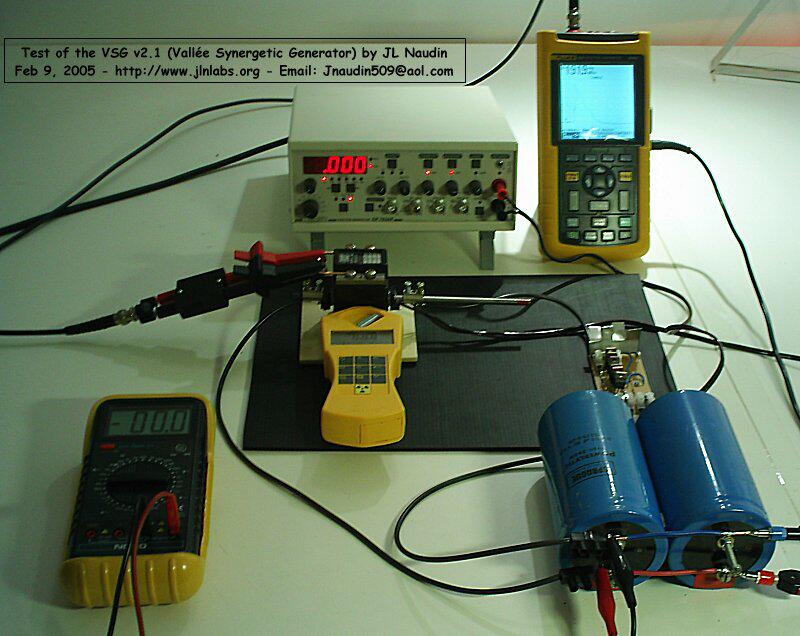
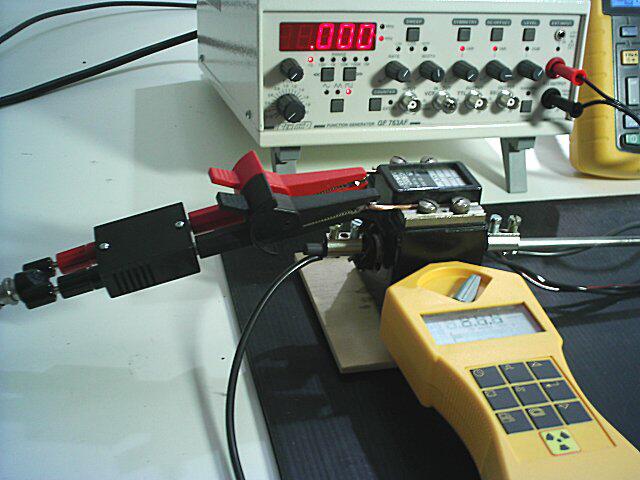
A 1 ohm shunt has been connected at the Current Transformer
output
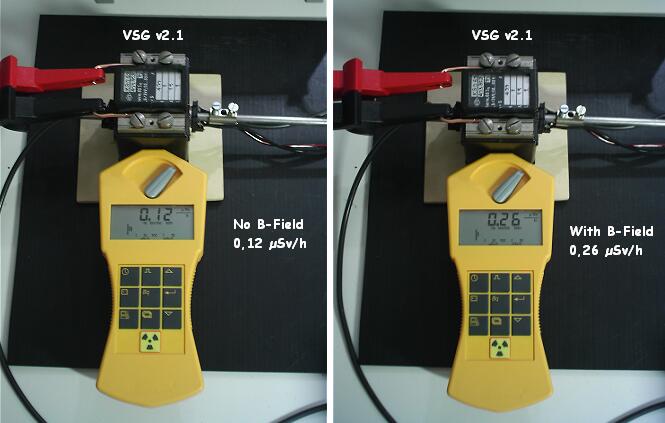
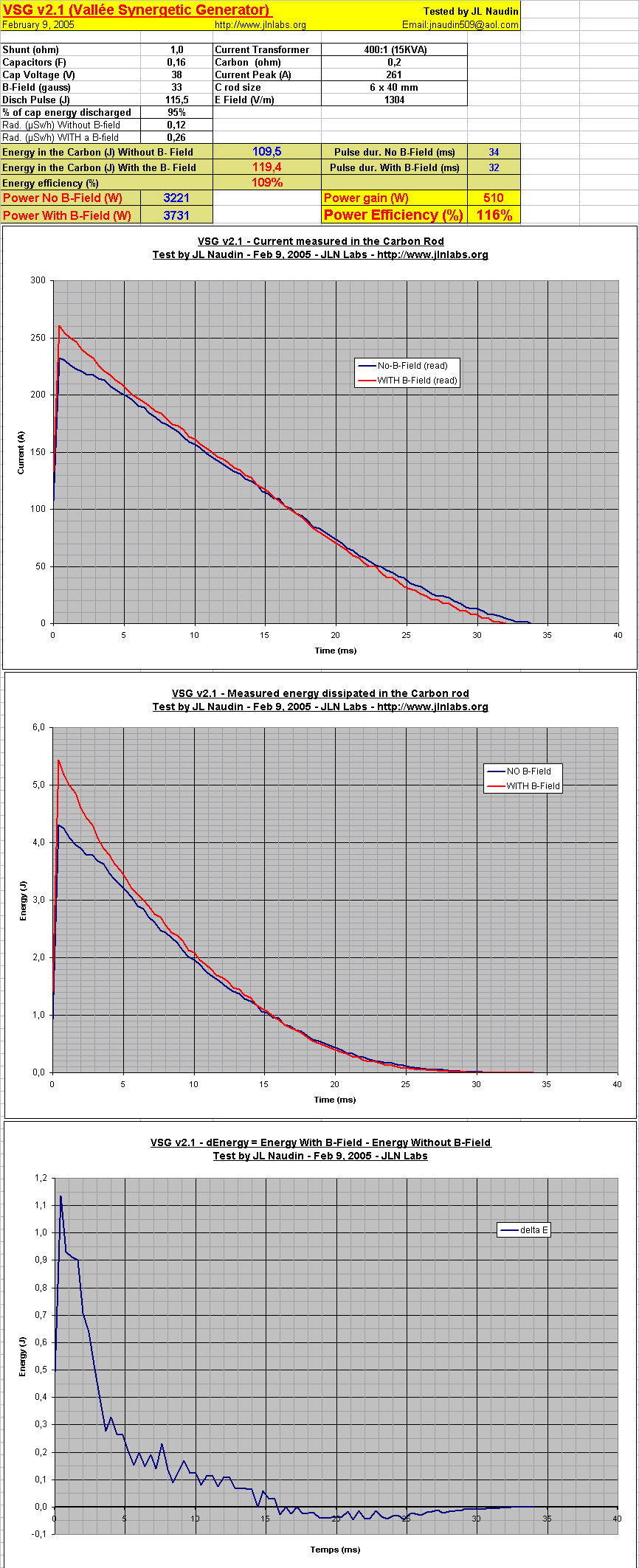
You may notice that
the major gain in energy (10 J) is obtained during the first 5 ms
of the discharge process, this can be explained by the existence
of a working point of the VSG. A proper E-Field and B-Field level
must be found so as to get the best energy efficiency.
 WARNING, USE
CAUTION ! This
experiment is not intended for the inexperienced. User of
this document should be very carefull and experienced in
the field of electronic and radioactivity to try anything
out ! If you do it the risk of any results is just yours.
I take no responsibility of anything that might happen. WARNING, USE
CAUTION ! This
experiment is not intended for the inexperienced. User of
this document should be very carefull and experienced in
the field of electronic and radioactivity to try anything
out ! If you do it the risk of any results is just yours.
I take no responsibility of anything that might happen. |
For more informations : JNaudin509@aol.com
Return
to the VSG page




